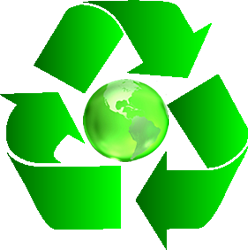    |
||||

Energy Resources |
||||
|
An energy resource (sometimes called an energy source) is a natural system (such as a waterfall) or store of energy (such as fuel) that we can use to make electricity. Electricity - a versatile energy source for the modern world
It works so well to satisfy our need for help in performing tasks that our lives would be very different without it. Ask an elderly relative what life was like without electricity and/or imagine what it would be like if suddenly we all had no electrical power. Life would be much harder - and a lot less fun! Unfortunately the only natural source of electricity that is concentrated enough for us to use is lightning - and that is too concentrated! We therefore have to make electricity from other sources. We mainly do this in electrical power stations and transfer the electricity to our homes via a national electrical grid system. Can you work out the energy changes involved in everyday objects? Try this exercise. Renewable and non-renewable energy resources
The symbol on the right is the universal 'recycling symbol combined with a graphic for the green earth from http://wxresearch.org/ - it wonderfully illustrates what using renewable energy does. Renewable energy resources are the oldest, cleanest and in most cases the most efficient forms of energy humans have at their disposal. They will never run out (well not until our Sun burns out - and we will probably be extinct by then!) and do not pollute the environment by emitting gases that cause global warming effects or acid rain, nor do they produce radioactive waste. Non-renewable energy sources will run out eventually because they are not being replaced naturally at a fast enough rate for us to make use of them. Non-renewable resources are widely used directly (as heat sources) or to make electricity. Nuclear power uses Uranium. This was in the rocks of the planet when it was formed - we cannot get any from anywhere else! The nuclear industry has tried to put forward the case that it is renewable as the process that splits the Uranium 235 to make nuclear (or atomic) power also causes the Uranium-238 present to change into Plutonium and that can be used as a nuclear fuel too. But nuclear power is not classed as renewable - it is a non-renewable source.
The important thing here is to understand the timescale involved. 7,000 years ago Europe was in the Stone age and the earliest pyramids were thought to be built about 5.000 years ago... so does that put it into perspective for you? PollutionThe pollution from non-renewables is believed to be causing a lot of problems for our planet, but they are well established as energy resources and to suddenly stop using them would cause social problems for countries (eg. closing a coal mine would put lots of people out of work!). The technology for useing pollution causing fuels is well established and therefore rising industrial nations (India and China) are increasing their use of them at an alarming rate. In the long term it is important that we decrease our use of non-renewable and increase the use of renewable energy sources - but until we all work together to help poorer developing nations to develop cheap renewable energy we will continue to threaten our survival.. Despite efforts made by global leaders to agree on a global energy policy that will avaoid global warming, only a small percentage of our total energy use comes from renewable energy resources. The rest is primarily made up of fossil and nuclear fuel sources which are non-renewable. Click here to go to a page that lists commonly used energy sources |
||||
 |
||||

 The most versatile form of energy is electricity. We have devised many gadgets and machines that run on electrical power to do useful work for us and we also have developed many that simply amuse and entertain us. They are designed to take in electrical energy and turn it into other forms (see
The most versatile form of energy is electricity. We have devised many gadgets and machines that run on electrical power to do useful work for us and we also have developed many that simply amuse and entertain us. They are designed to take in electrical energy and turn it into other forms (see  Renewable energy sources
Renewable energy sources 

